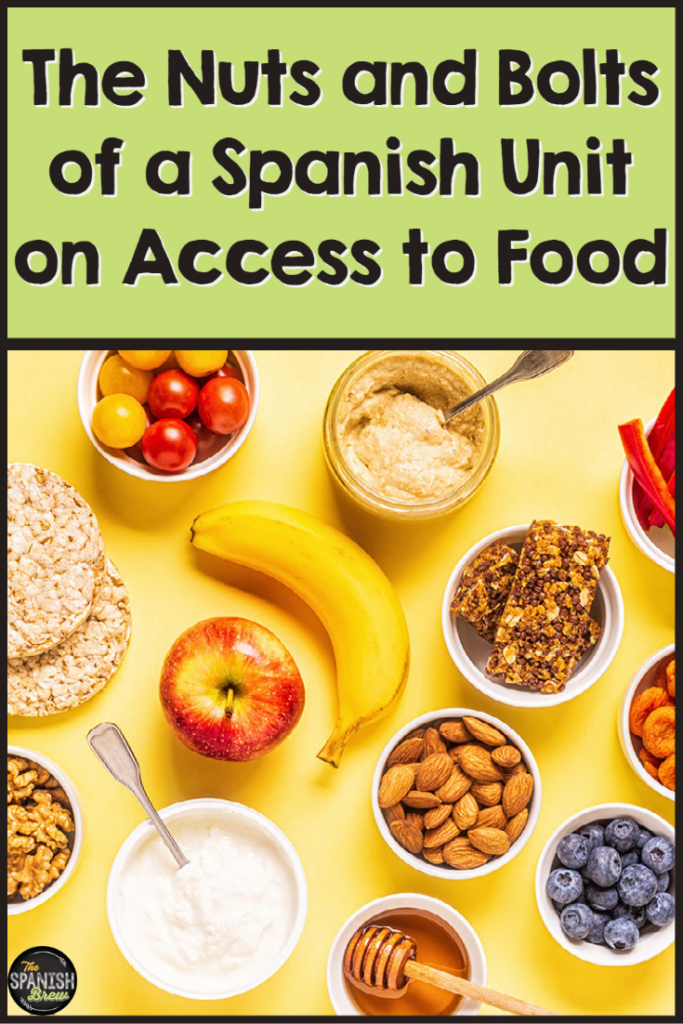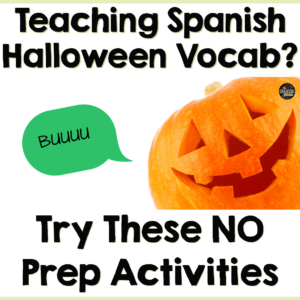Are you tired of teaching a boring unit on la comida? Ready to spice up your Spanish classroom and get your students truly engaged? Then you will love this unit on access to food. In this post I break down the different elements of the unit and how I got my novice learners to talk about this important issue.
Building their language skills
Step one is to give them enough language and vocabulary to be able to talk about the topic. I use images to get students thinking about the unit and our overall goals. Then we make personal connections to the topic while reinforcing the key vocabulary terms.
Activities included:
- ¿Qué ves? Think, See, Wonder. Using images to make predictions
- Essential vocabulary & matching activity
- 4 corners activity to determine class preferences on food
- Personal true/false questions
- Read & draw. Essential vocabulary input
- Interpersonal speaking task cards
Comprehensible Reading Passages
Students read three passages relating to access to food and food deserts. High frequency verbs, cognates and essential vocabulary words are used to make these readings accessible to students. They make cross cultural comparisons between Mexico and the United States.
Activities included:
- 3 comprehensible reading passages
- Comprehension questions in English and Spanish
- Graphic organizers
- Draw to summarize the passages
- Map of Mexico
- Sentence completion activities
- True/false questions about the passages
- Interpersonal writing activity
Project based learning
Throughout this unit students demonstrate their knowledge through projects. It requires them to synthesize the material and use this knowledge for a greater purpose. Students research access to healthy food in their own community. A multitude of activities are included to help them organize and process the information they research. Students complete a final presentational writing and/or speaking to share their knowledge. The final project asks them to make a visual advertisement that can be posted for the entire school community to educate others on the importance of making healthy food choices.
Activities included:
- Analysing statistics about food deserts
- Midpoint project- Community gardens/ farmer’s markets
- Final project– Access to healthy foods in their community
- Personal questions
- Graphic organizers
- Scaffolded writing exercises
- Graphs
Skills assessed
- Interpersonal Writing
- Interpersonal Speaking
- Presentational Writing
- Presentational Speaking
- Interpretative Reading
- Interpretative Listening
Your students will love learning about this critical topic of access to healthy foods. It’s relatable, relative, and prompts them to become global citizens. They will use their Spanish skills to analyze the challenges surrounding food deserts and some possible remedies to this problem.





No Comments